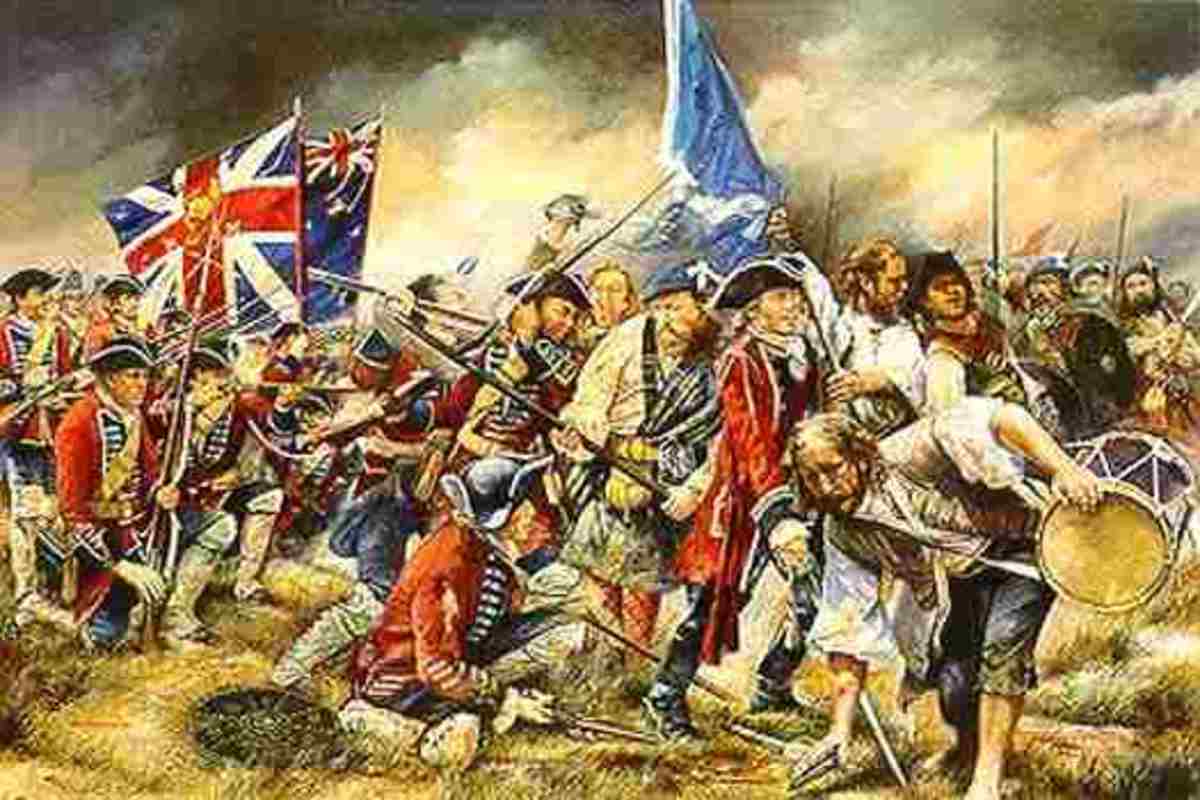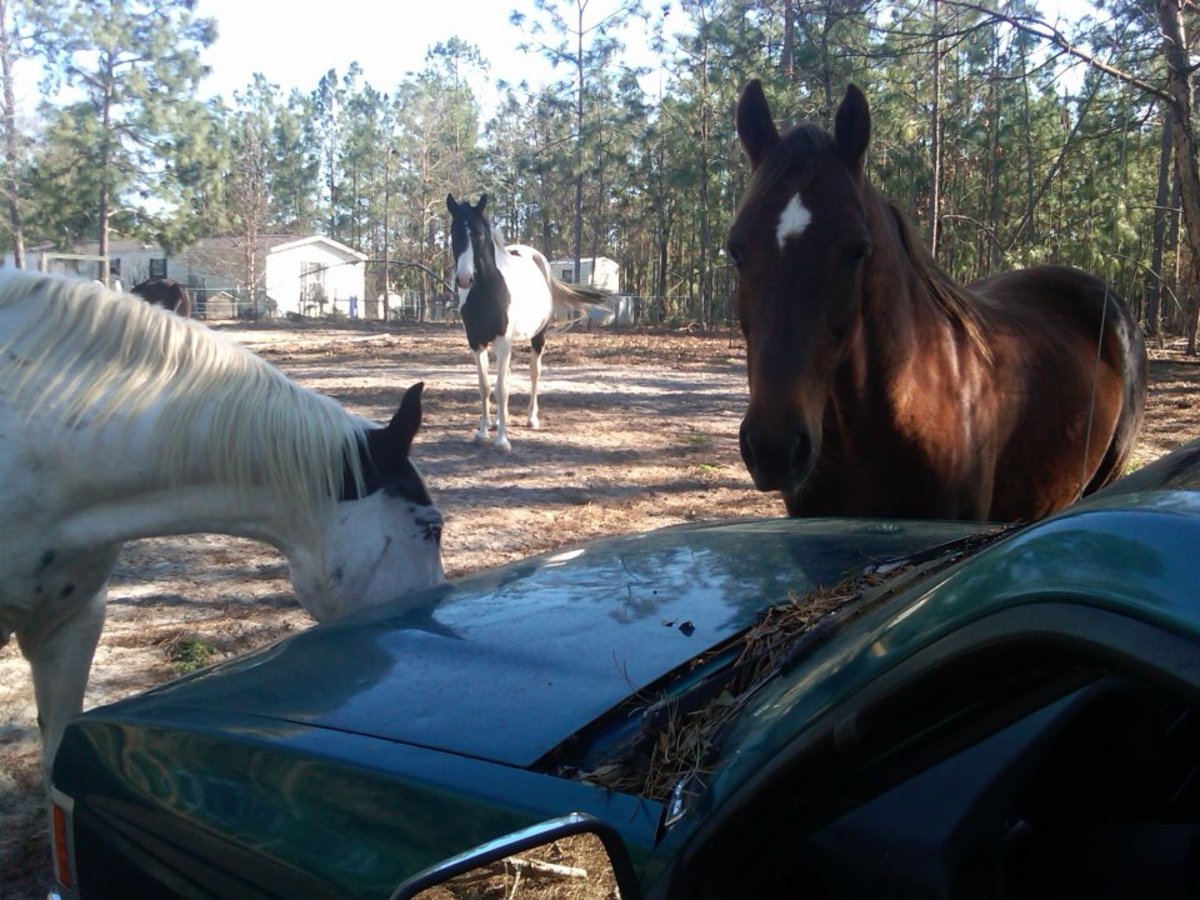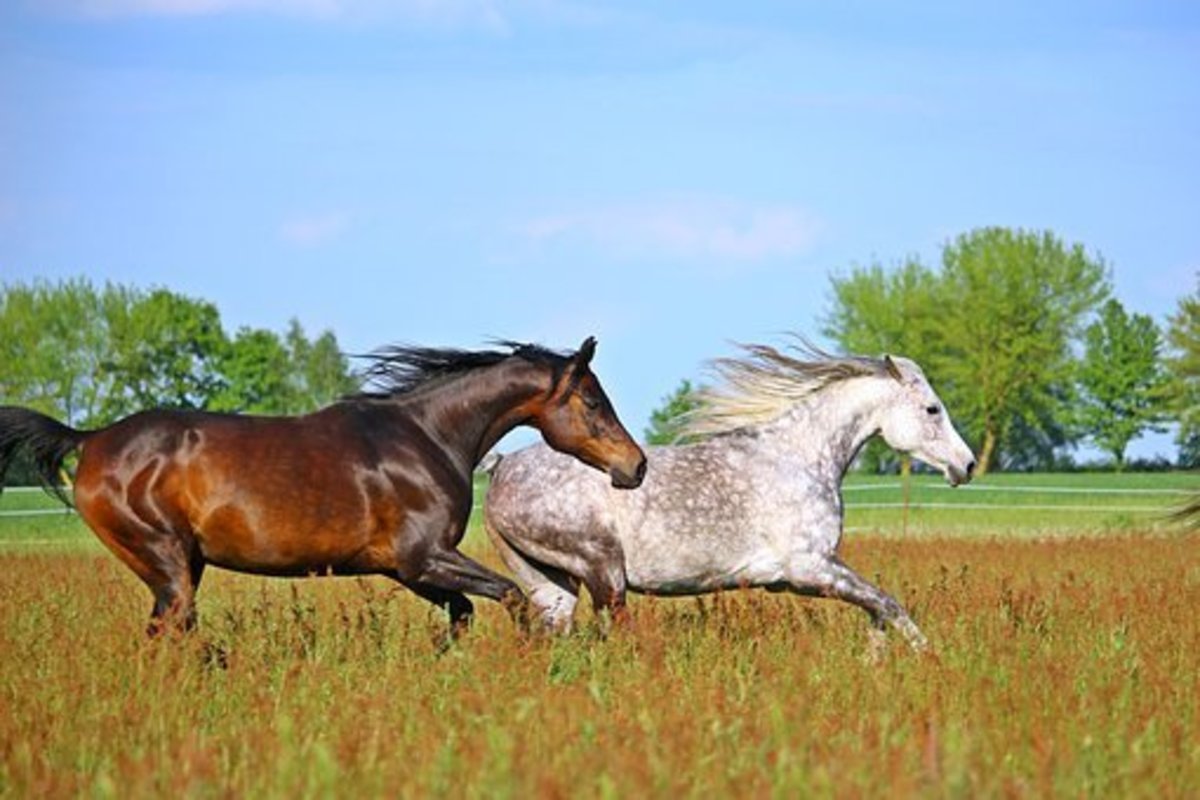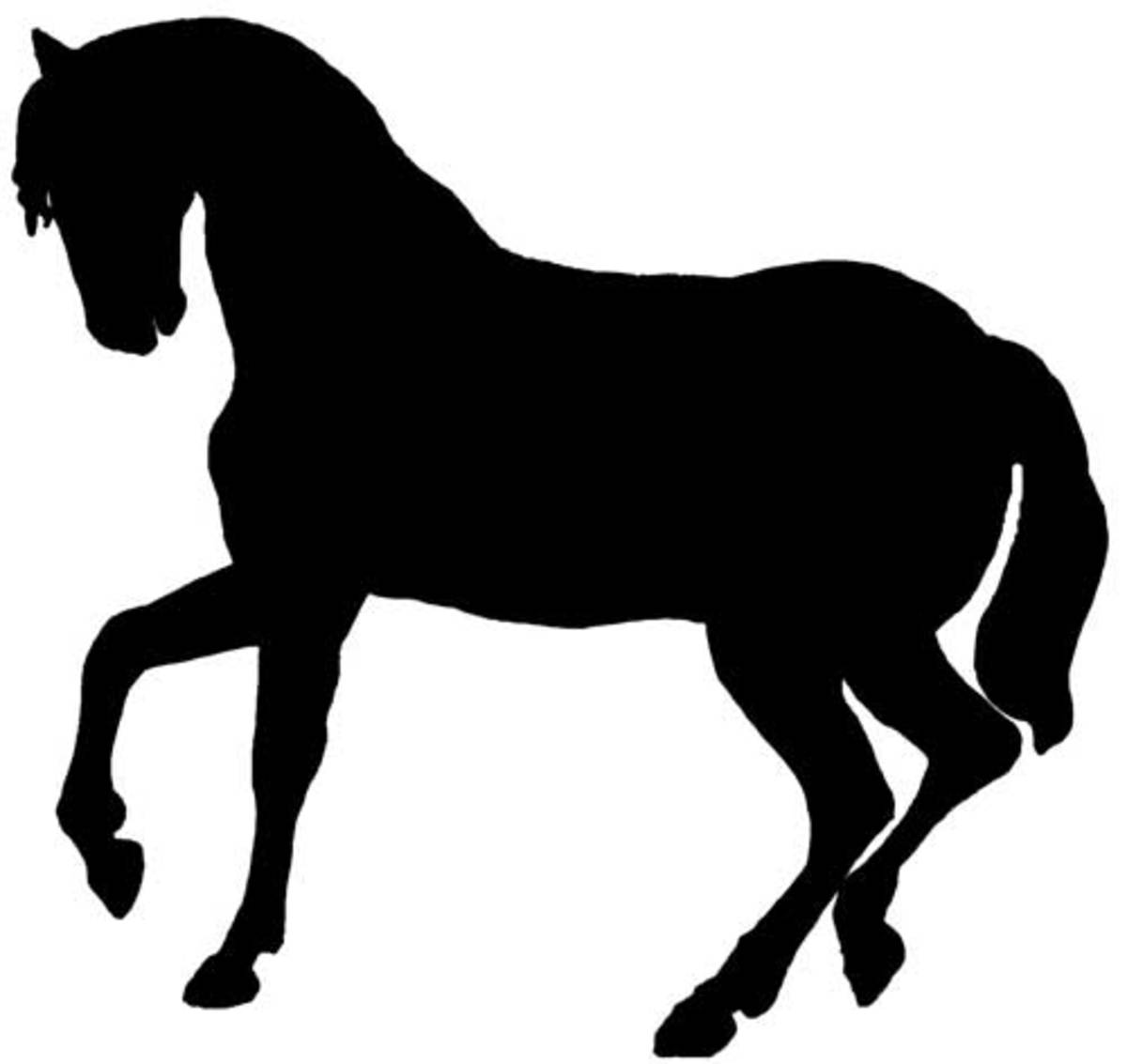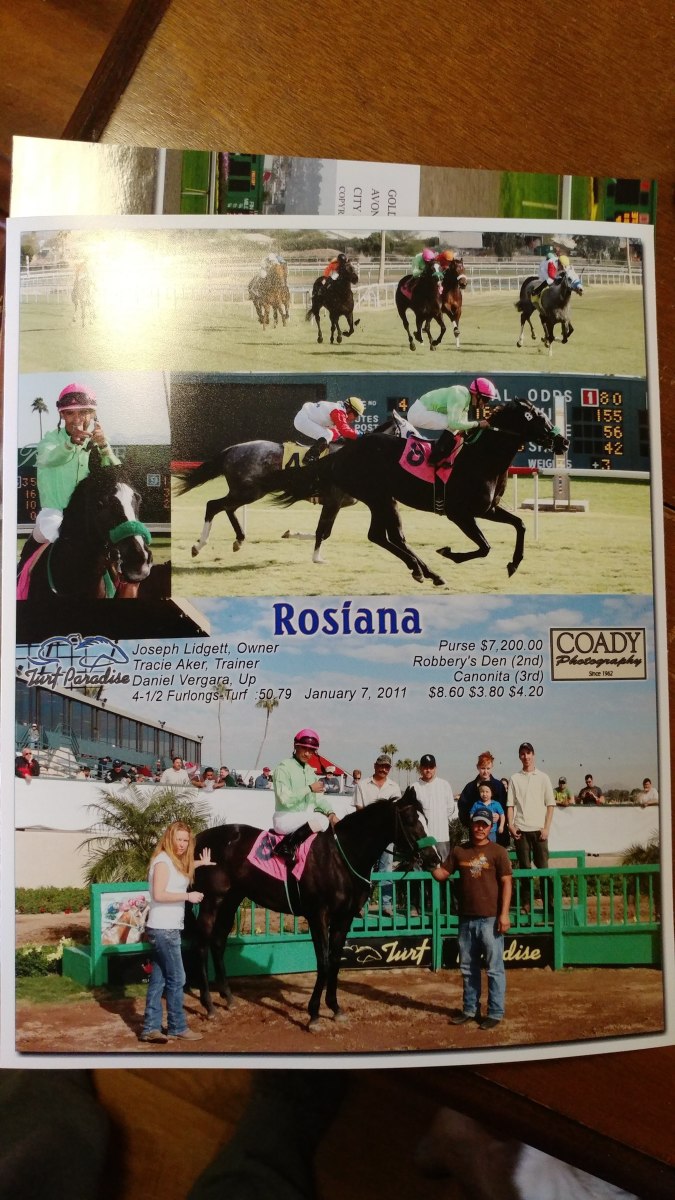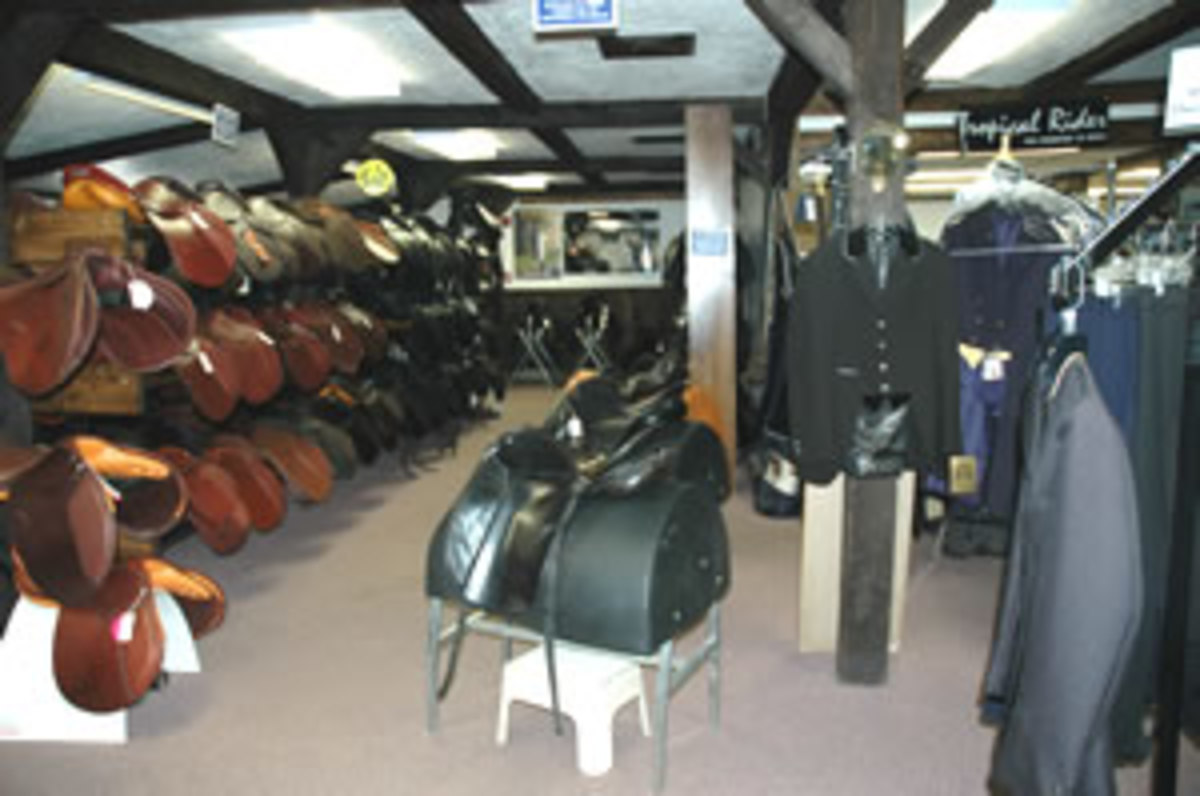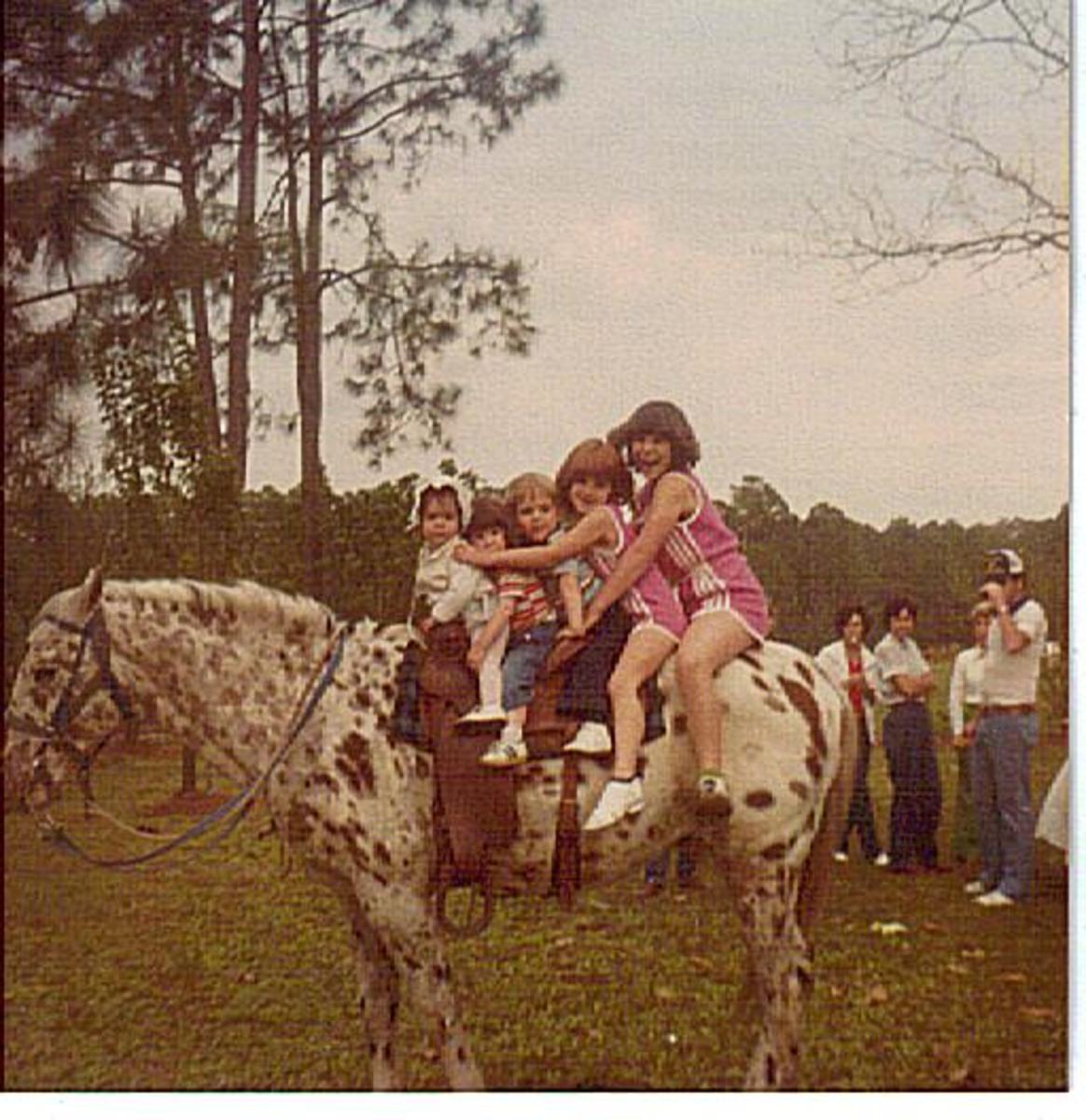Appreciating The British and Irish Cob
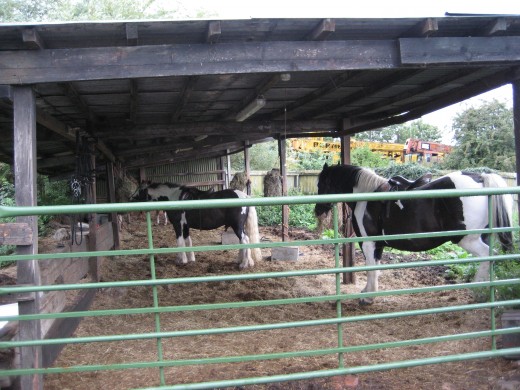
What is a Cob?
Most Americans are completely unaware of what a 'cob' is. (Incidentally, it is also a bread roll in some parts of England, just to add to the confusion). Only one of the American breeds qualifies as a cob and that is a very new breed, the Gypsy Vanner. The Morgan, however, has some cob-like qualities, especially older and foundation lines.
A 'cob' is larger than a pony, but often built more like one than a true horse. Some breeds in Northern Europe are called cobs and ponies interchangeably, and the term 'vanner' is also used for the larger end of the cob size.
In England, where the vast majority of cobs are bred, a cob is defined as a stocky horse standing between 14 hands and 15.1 hands (For those who don't know horses, a hand is four inches and fifteen hands is five feet). Cobs are supposed to be equally suited to riding and driving purposes, with short legs, plenty of bone and small, round hooves.
Cobs are almost entirely bred in England or Ireland, however, the Fjord and Haflinger ponies are close to the cob type, as are some lines of Icelandic horse. The breed and types I am going to go over today, however, are from Great Britain or Ireland.
The Hunting Cob
The English hunting cob is not a breed by the most common definition. That is to say, there is no stud book.
Instead it is a type of horse that is strongly associated with a particular purpose - fox hunting. The specific purpose of the hunting cob is to carry larger individuals to hounds who either do not want or have difficulty mounting a large horse.
Most English horse shows have classes for Hunting Cobs and Working Cobs - the latter class includes a round over fences and resembles American hunter classes. Hunting Cobs are ridden entirely on the flat. They are sometimes split into Lightweight Cobs (can carry up to 11 stone) and Heavyweight Cobs (can carry more than that).
Hunting cobs are expected to have the ability to jump and the stamina to follow a pack all day. In showing, anything other than minimal white is penalized. A hunting cob is always turned out with the mane hogged (roached) in order to show off the heavy, arched neck. (Cobs traditionally also had their tails docked, but docking has been banned in England for decades).
The Welsh Cob
Perhaps the most carefully bred of the cob breeds is the Welsh Cob. Established as a breed in the nineteenth century, the Welsh Cob was the workhorse of the Welsh hill farmer. It was intended to be the horse that could 'Plough on Wednesday, teach your daughter to ride on Thursday, follow the hounds on Friday, take the produce to market on Saturday and take the wife to church on Sunday'.
Welsh Cobs tend to be more refined and elegant than other cobs and come in any solid color. They generally have slightly dished 'pony' heads rather than the straight head or Roman nose seen on other cobs. They are registered in Section D of the Welsh Pony and Cob Society Stud Book, with the standard requiring a height between 14 hands and 15.1. Smaller animals are registered in Section C as 'Welsh Ponies of Cob Type' and animals that go over height in Section E. However, Section E animals are not allowed to produce purebreds and males must be gelded before registration.
Pinto and leopard complex (Appaloosa) genes were prominent in early 19th century cobs but, perhaps due to fashions of the time and a general association of horses with a lot of white as 'common' or 'not pure bred', the WPCS elected not to register spotted horses. Despite this, sabino markings do show up in modern Welsh Cobs and are no longer penalized.
It is believed by some that Justin Morgan's Horse, the foundation sire of the Morgan breed, was in fact a Welsh Cob.
The Irish Cob, Colored Cob and Gypsy Vanner
These three closely related breeds or types are commonly confused and lumped together as 'gypsy' horses. They do have strong similarities. All three are known for spectacular coloring, full feather, mane and tail and temperaments such that even the stallions can be taken to water by a small child.
The oldest of the three is the Irish Cob, bred to pull small wagons or caravans. Tending to be around fifteen hands high and either piebald (black and white) or roan, with a straight or slightly Roman nose and a quiet temperament.
The Colored Cob or Gypsy Cob is seen more in England and is lighter and more refined than the Irish Cob. Colored cobs are strongly associated with the Welsh Cob and traditional breeders commonly cross in Welsh Cob blood. As such, they have a 'pony' head. The majority are piebald, but spotted and leopard characteristics are very common. Their smaller size made them ideal for pulling narrowboats - small barges used on Englands very narrow canals.
The Gypsy Vanner is commonly sold as an 'ancient' breed, but is in fact a recent American invention bred out of the colored and Irish cobs. These horses tend to be taller and draftier, but retain the temperament, heavy feather and loud piebald coloring.
The Dales Cob
As the Welsh Cob was the utility horse of the Welsh farmer, the Dales Cob was and is to Yorkshire. Almost always black, but with bay and grey common, the Dales Cob tends to have a common 'cob' head. The Dales Cob stud book refuses to register any horse with 'excessive' white, defined as anything but a small star and a white band just above the hoof.
This causes some purebred Dales to be registered as part breds as socks and blazes are not always a genetic phenomenon. The Dales Cob is a heavily feathered, fast trotting harness breed, quiet in temperament.
It bears a little known distinction: The Dales Cob is believed to be the first breed of horse to be selectively bred for harness racing, a common weekend pastime of the Yorkshire farmer. Sadly, the farmers now race imported standardbreds and the Dales Cob breed has declined, becoming a rare breed in modern times.
There...
This is just an introduction to the wonders of the cobs and cob breeds. With the exception of Gypsy Vanners and, in some areas, Welsh Cobs, these breeds are almost unknown outside of their British stomping grounds. Undeservedly so...these small, stocky, powerful horses are perfect for trail riding and pleasure driving and may make the ultimate English all-rounder. Although they tend to do no one thing spectacularly well, they do most things competently and smartly.


